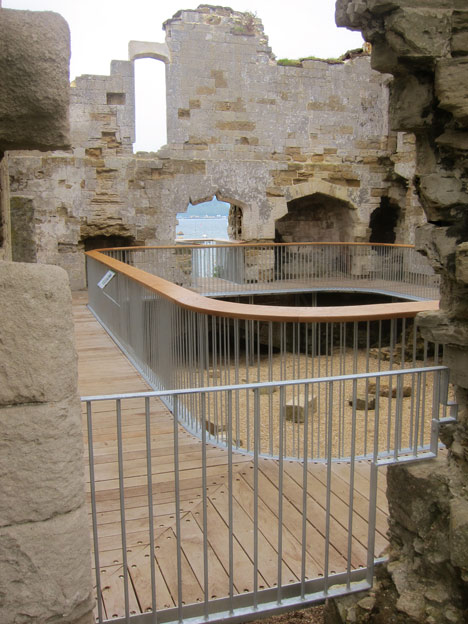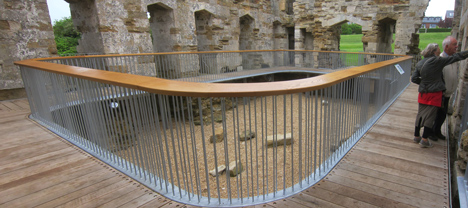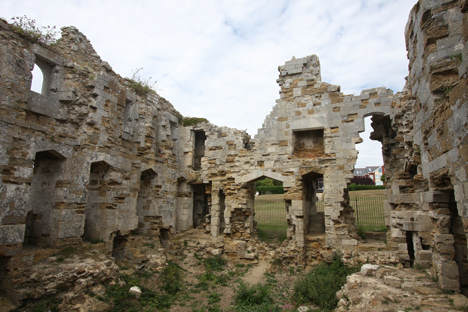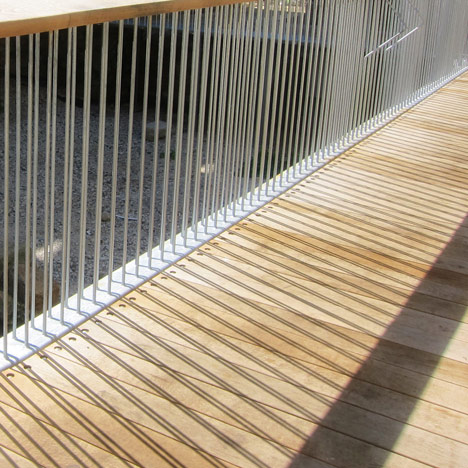LusiveLife
LusiveLife /
Design - Events - Giving - InspirationOak Walkway by Levitate Inserted Into Ruined Castle
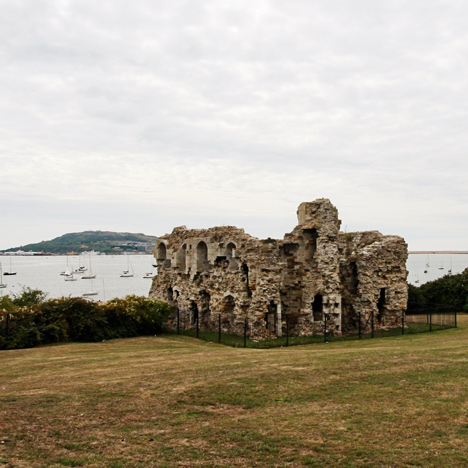
Built on a cliff edge in Dorset, Sandsfoot Castle is under constant attack from coastal erosion and as a result had been unsafe for visitors since the 1930s. Levitate was commissioned to carry out a conservation project so the castle could be reopened to the public. Levitate designed a lightweight walkway that slots into the internal space of the ruin. It traces the ruined walls, touching the fabric of the castle in as few places as possible.
The walkway is installed at what used to be ground level, providing a gallery-like space that allows visitors to occupy the castle as it had been historically. On the coastal side, the walkway juts out into a doorway to create a balcony with views across the harbor.
The walkway is constructed of oak boards that sit on top of a galvanized steel frame. These materials were chosen for their low maintenance and ability to withstand the harsh coastal environment. A continuous oiled-oak handrail runs around the inside of the walkway, designed as a place to lean.
Sandsfoot Castle was built by Henry VIII between 1539 and 1541 to work with Portland Castle to protect the waters of the Portland Roads against the threat of foreign invasion. Standing on the cliff edge the castle has been under attack from coastal erosion since it was built. Most of the ashlar stone has been lost to local building projects and thieves. The castle has been closed to the public since the 1930s.
The project was part funded by the HLF with Weymouth & Portland Borough Council providing match funding, and consisted of conservation treatment to the castle stonework and the insertion of a new lightweight walkway to open the castle up to the public once more. The work was completed on time and on budget, opening in the summer of 2012 to be enjoyed as part of the Olympic events being held in the town, the location of the sailing and windsurfing events.
